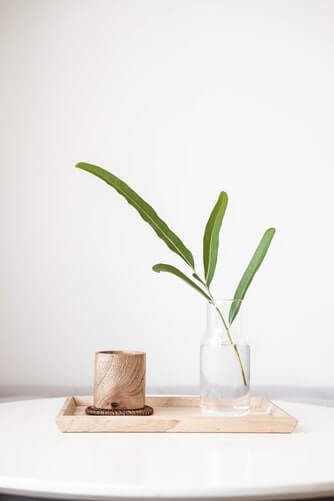Sofia Akemi Marchi
Digital Artist & Brand Designer
BARCELONA | SPAIN
As the name suggests, Japandi is a mix of the words Japan and Scandi (short word for Scandinavian).
In the last couple of years, the word has become used in the home decor and interior design lingo to define a style that combines elements of Japanese design with elements of Scandinavian design.
With its increasing popularity among home decor enthusiasts (and Pinterest users!), Japandi is probably here to stay for a while.While this is considered a styling trend like many others, there are interesting lifestyle ideas behind the Japandi wave which are worth exploring.
Here is a short summary of how Japandi came to be and why we can draw valuable lessons from it.
The origins of Japandi
Despite the geographic distance, Scandinavian and Japanese design share many similarities which made the merging into Japandi possible.
Scandinavian design has enjoyed widespread appreciation for quite some time now.
If you have even a slight knowledge in home decor, you are likely familiar with the clean minimalist look that typically characterises the style.
As its Scandinavian counterpart, Japanese design embraces also a minimalist and simple look (think Muji).
It also makes extensive use of wood, which is a characteristic of Scandi interiors as well.
In most recent years, another aspect of Scandinavian culture has gained attention – the idea of hygge. Often translated with “cozy” or “having a good time”, this lifestyle found fertile ground among people who were disengaging from high-pressure, high-speed lifestyles.
It resonated well also with the growing so-called slow life movement, where values shifted from consumerism to intentional choices.
It is in this very aspect of Scanidnavian style – the one permeated with intentionality – that Japanese and Scandi ideas came to merge even further. The shared values became not only design-related, but also lifestyle based.
Intentionality is in fact present in Japanese culture thanks to its historical Zen philosophy, often considered the source of mindfulness practices.

The lifestyle values behind Japandi
With its hinting at slow living, simplicity and intentionality, Japandi offers a good response to interior design fans who choose a mindful approach in their lives.
For instance, Japandi is all about reaching a soft, calming look for your home. This is in line with a mindful way of living, where calm and interior serenity are the goal.
Serenity is achieved also by keeping one’s home clutter-free. As Marie Kondo’s success can testify, many feel the need to get rid of objects that are redundant. A simpler home is in fact believed to promote a feel of calmness and joy, but it also means being more intentional with our shopping habits. In fact, being a child of minimalism and simple lifestyles, Japandi does not align with consumerism. Quality over quantity is valued.
Craftsmanship is also cherished. This is another common element between Japanese and Scandinavian design, which now becomes even more appreciated because it comes with the flavor of tradition and of skills honed over time.
The sustainability factor in the Japandi trend
A last element that Japandi has at its core lies with sustainability.
While this may not be the main goal of the trend, it is a positive, secondary effect.
In a time when individual responsibilities are called upon to preserve the environment, Japandi has some good lessons to share
Use more natural materials.
The natural, calm look sought after in Japandi relies heavily on the use of natural material in the styling. Particularly, wood and bamboo for the furniture; paper for the lamps; unbleached or naturally dyed fabric for the soft furniture.
The environmental impact of using materials that are easy on the environment, easy to recycle (like wood and paper) and that grow quickly (such as bamboo) is clearly a plus when it comes to making sustainable choices.

Buy less, buy better.
As mentioned in the previous paragraph, Japandi favours a minimal look and intentional shopping. This means spending a bit more for quality but buying items that are meant to last longer, thus promoting a sustainable consumption.
Recycle, do not throw.
Apart from the use of recycled materials for your furniture, Japandi is inspired by the concept of “wabi-sabi”. This is an idea derived from Zen and it promotes an appreciation for the beauty of the imperfect, incomplete and impermanent.
When it comes to home decor, this is a clear push for trying fixing broken objects before throwing them, as beauty can be found also in the imperfect and incomplete.
Which is also a valid point for buying vintage and second-hand.
Concluding
I hope you found this overview of the Japandi style interesting. As someone who is half Japanese, lived in Sweden and loves home decor, I have been very pleased to see this trend gaining popularity.
If you want to learn more about Japandi, Scandinavian style and home decor, you can follow me on my Instagram account or check my website.
ABOUT

Japanese-Italian graphic artist and brand designer passionate about home decor and the inter-connection between lifestyle and history.
CONNECT









